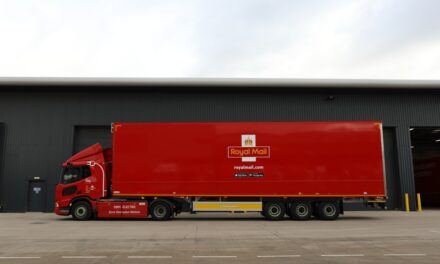
Consignia may cut use of mail trains
Consignia, the state-owned postal services group, is considering drastic changes to its distribution network that could lead to a big reduction in its use of mail trains.
A review of the company’s transport needs is understood to be seeking substantial savings in the cost of distributing 80m letters a day, of which about 20 per cent go by train.
The review is led by Paul Bateson, managing director of logistics, who was formerly an executive at TNT, the road-based logistics group. It is expected to report by Christmas as part of the company’s attempts to cut its Pounds 8bn costs by about Pounds 1.2bn.
Officials say it has yet to come to final conclusions. However, some executives argue that Consignia’s Pounds 65m-a-year contract with English Welsh and Scottish, the rail freight company, is costly and inefficient.
Under the contract, which runs until 2006, EWS runs 58 mail trains a night, 16 of which are owned by Consignia. Executives say it was signed in 1996 by the former Post Office when there was no prospect of competition in postal services.
They say the service is inflexible, which makes it difficult to cope with unexpected bulk mailings. It operates only five days a week, and Consignia executives say it has never hit its target of 95 per cent reliability.
EWS said it achieved 94.3 per cent reliability in the six months before the Hatfield rail crash, a year ago, and is now running at about 93 per cent. However, it admits that reliability fell to below 50 per cent after Hatfield.
Consignia is under pressure from the Postal Services Commission, the industry regulator, to improve the reliability of first class post to 92.5 per cent from 86.5 per cent in the quarter to June.
Executives say they understand that problems were caused by the Hatfield crash. But there is long-standing concern about issues such as access to the London Railnet terminal last Christmas, and delays to a Bristol rail hub caused by disputes between rail companies.
A move away from rail would challenge the government’s strategy of encouraging rail freight. Most letters would go by road because air freight is also expensive and relatively inflexible.
One radical option under consideration is the creation of a “hub-and-spokes” distribution system to replace the existing matrix. This would run on the “just in time” principles widely used in manufacturing.
Executives say it could offer fresh opportunities to the railways, which are suited to high capacity scheduled services between a small number of fixed points. Consignia’s parcels arm runs such a system through a hub in Coventry.
Copyright: The Financial Times Limited 1995-1998










![Citizens Advice: We continue to see millions of people chasing lost parcels [and] having their accessibility needs ignored](https://postandparcel.info/wp-content/uploads/2020/12/parcels-440x264.jpg)

